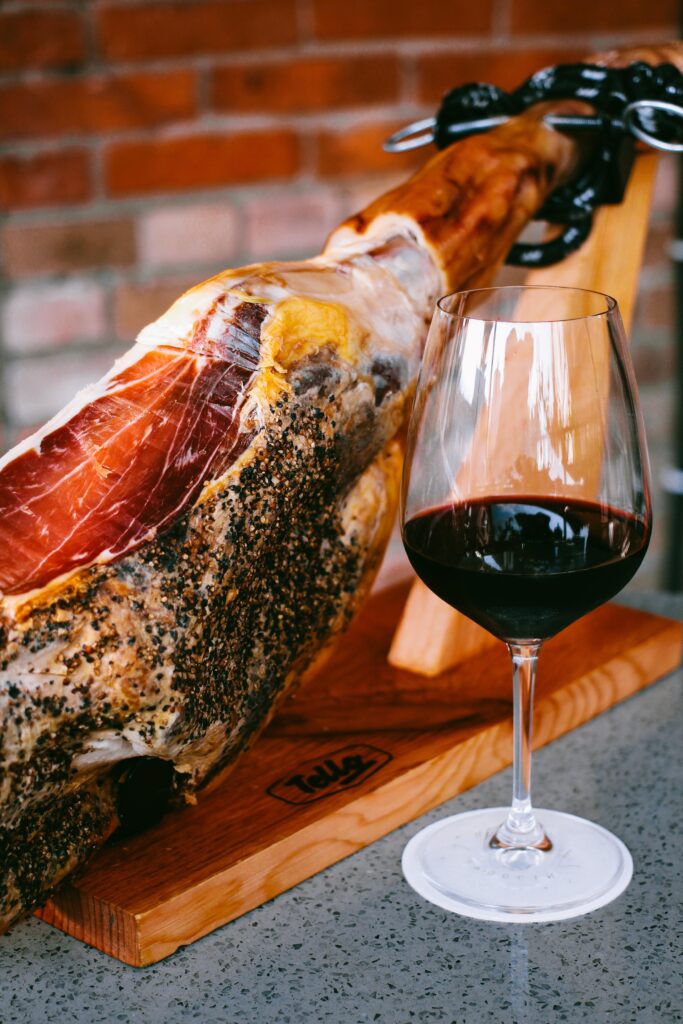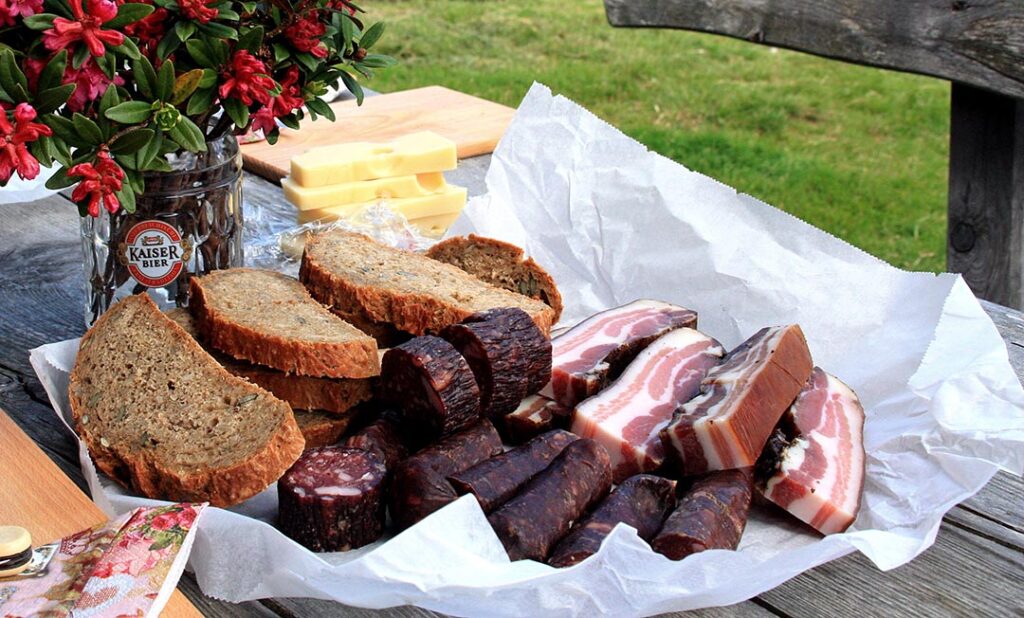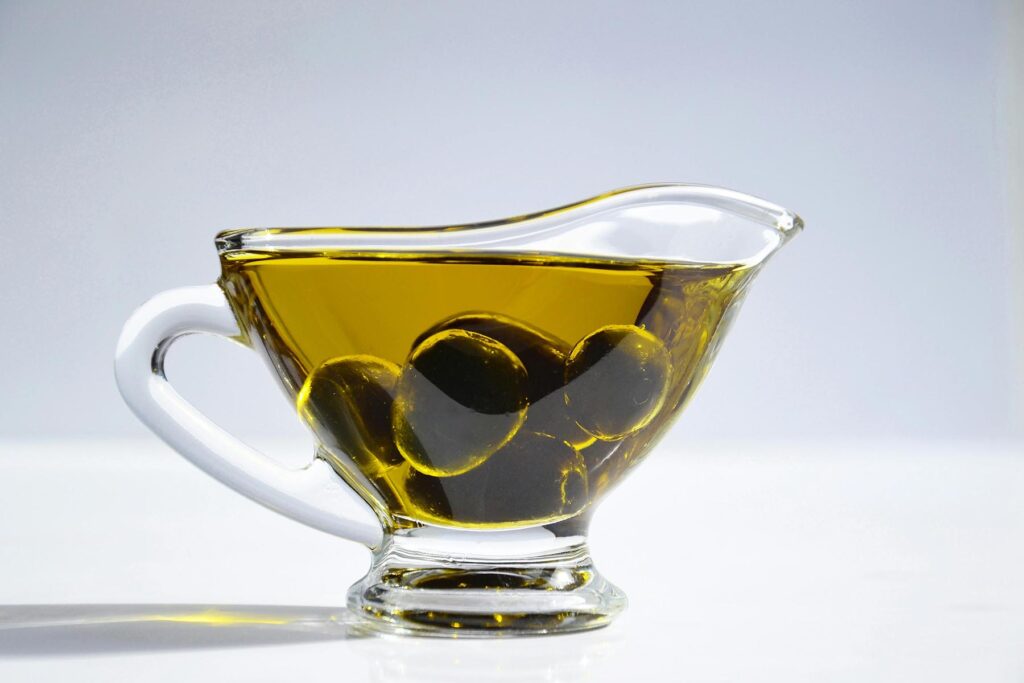
Cured meats are prevalent in just about every culture and just about every continent around the world. Cured meats began and have long been popular due to their preservation qualities. Before refrigeration was widely available, curing was one of the few methods available to preserve meat. By adding salt and other ingredients, the meat could be stored for more extended periods without spoiling. Today, while refrigeration is readily available in most places, the tradition of curing meats has continued and is often done for flavor and texture rather than preservation alone.
One of the primary reasons cured meats are so popular today is due to their unique flavor. The process of curing meat involves adding salt and other seasonings, which gives the meat a distinct taste. Depending on the type of meat and curing method, cured meats can have a range of flavors, from salty and savory to sweet and tangy.
Cured meats also have a pretty unique texture. The curing process can cause the meat to become firmer and denser, which many people find appealing. Plus, cured meats can be sliced very thinly, making them an ideal addition to sandwiches, charcuterie boards, and other dishes.
There are many different types of cured meats from around the world. Some popular examples include bacon, ham, salami, chorizo, pepperoni, bresaola, pancetta, coppa, guanciale, pastrami, corned beef, prosciutto, Jamon Iberico, speck, and many more. Here we will give more information on three popular and delicious cured types of meat – Prosciutto, Jamon Iberico, and Speck.
What is Prosciutto?

Prosciutto is a type of dry-cured Italian ham that is usually made from the hind leg of a pig or wild boar. The meat is first salted and then aged for a minimum of 18 months (many between 24 and 36 months), during which time it is pressed and sometimes flavored with herbs, spices, or other seasonings (such as pepper or juniper berries). The result is a firm, flavorful ham that is typically sliced thin and served as an appetizer or ingredient in a variety of dishes. Prosciutto should offer a perfect balance of sweet and salty, with a rich but refined porcine flavor and a silky texture.
There are two main types of Prosciutto:
- Prosciutto di Parma, which comes from the Parma region of Italy and is often considered the highest-quality Prosciutto.
- Prosciutto di San Daniele, which comes from the San Daniele region of Italy and is also highly regarded.
Other types of Prosciutto are made in various regions of Italy and have their own unique flavor profiles and curing methods.
What is Jamon Iberico?

Jamon Iberico, also known as Iberian ham, is a type of cured ham from the Iberian pig, a breed of pig native to the Iberian Peninsula. The pigs are typically free-range and allowed to roam and feed on acorns and other natural foods in the oak forests of southwestern Spain and Portugal. The meat is known for its distinctive flavor (vibrant and nutty) and texture (incredibly tender), resulting from the pigs’ unique diet and lifestyle.
Jamon Iberico is made by salting and air-drying the pig’s hind legs for up to three years. The process includes several stages, including salting, washing, and air-drying, and is carefully monitored at each stage to ensure the quality and safety of the meat.
Jamon Iberico is considered a delicacy and is highly prized in Spain and other parts of the world. It has a smooth texture and rich, savory taste from the marbling of fat. It is typically served in thin slices as an appetizer or snack, often accompanied by cheese, bread, and wine.
What is Speck?

Speck is a type of cured meat originating from the South Tyrol region in northern Italy. It is made from the hind leg of a pig and is similar to Prosciutto or ham but with a smokier, more intense flavor.
The curing process for Speck involves rubbing the meat with a mixture of salt, pepper, and various herbs and spices, such as juniper berries and bay leaves. The meat is then cold-smoked over beech wood for several weeks, giving it its distinctive smoky flavor. After smoking, the meat is aged for several months to develop its flavor and texture further. Due to the high-fat content, Speck is typically well-marbled with an elastic texture with deep smoky and savory flavors with hints of juniper and bay leaf. It is typically sliced thinly and served as an appetizer or used as an ingredient in various dishes, such as pasta, pizza, or salads.
Speck is popular in the South Tyrol region of Italy and is also enjoyed in other parts of Europe and North America. It is often compared to other types of cured meats, such as Prosciutto or bacon, but its unique smoky flavor sets it apart.
So, what is the difference between the three?
While Prosciutto, Jamon Iberico, and Speck are all types of cured ham or meat, they each have unique and delicious characteristics that set them apart.
Prosciutto is dry-cured ham made from the hind leg of a pig. Typically, it is thinly sliced and served uncooked. Jamon Iberico is made from very specific pure-bred Iberian pigs or a cross between Iberian and Duroc breeds. It is cured for a more extended period of time than Prosciutto and is usually served in slices or cubes. Speck is similar to Prosciutto, but it is smoked and aged longer. It has a more intense flavor than Prosciutto and Jamon Iberico.
| Prosciutto | Jamon Iberico | Speck | |
| Country of Origin | Italy | Iberian Peninsula, Spain and Portugal | South Tyrol Region of Northern Italy |
| Breed of Pig | Local breeds or wild boar | Black Iberian, occasionally mixed with Duroc | White |
| Part of the Animal | Hind leg | Hind leg | Hind leg |
| Smoked? | Not typically | Yes | Cold-smoked |
| Curing Time | 18-36 months | 12-48 months | 6-24 months |
| Flavor Profile | Delicate and sweet | Rich, nutty, and smoky | Smoky and intense |
Have you ever tried Prosciutto, Jamon Iberico, or Speck? What did you think? Which is your favorite? How do you like to eat it? Let us know in the comments!




